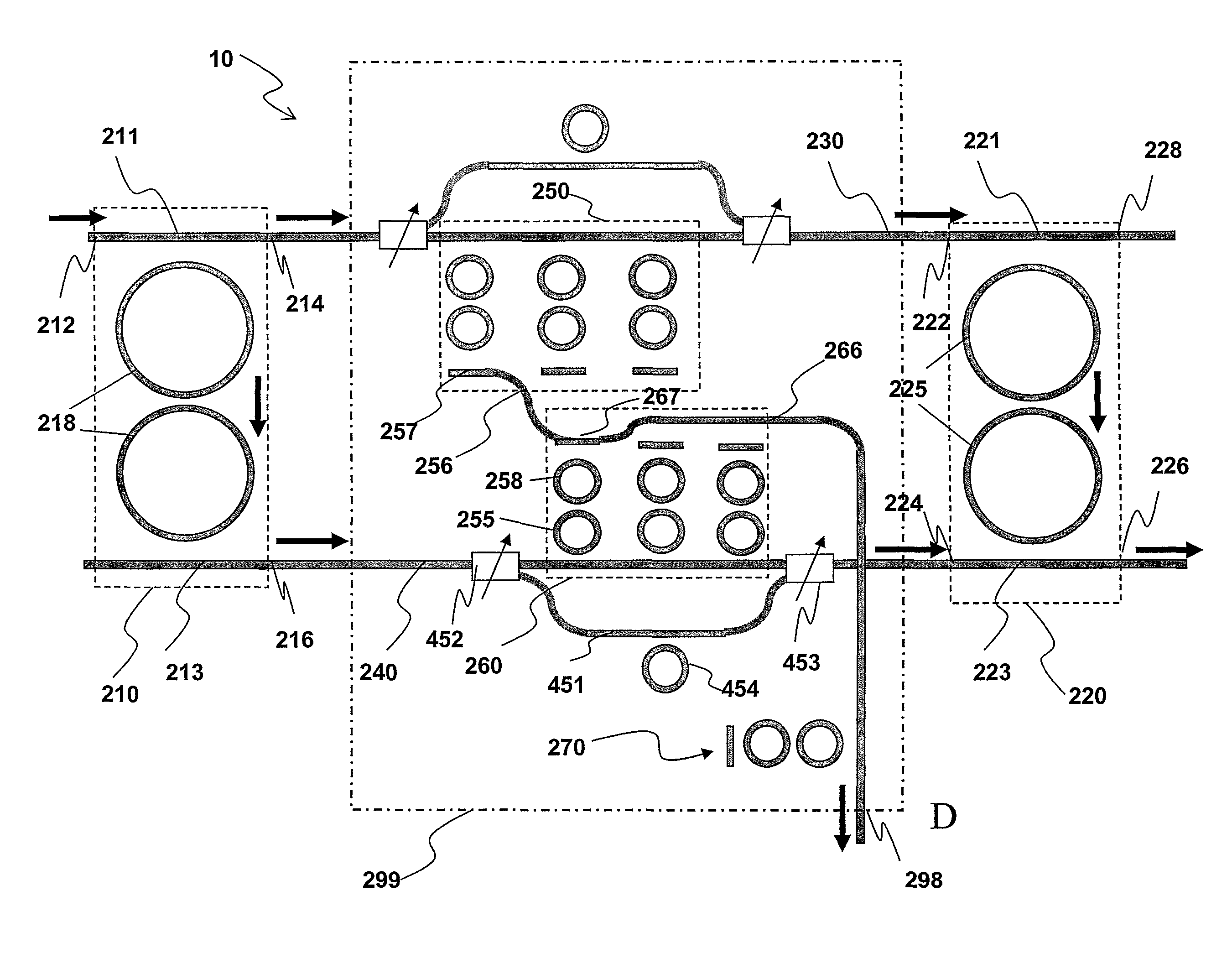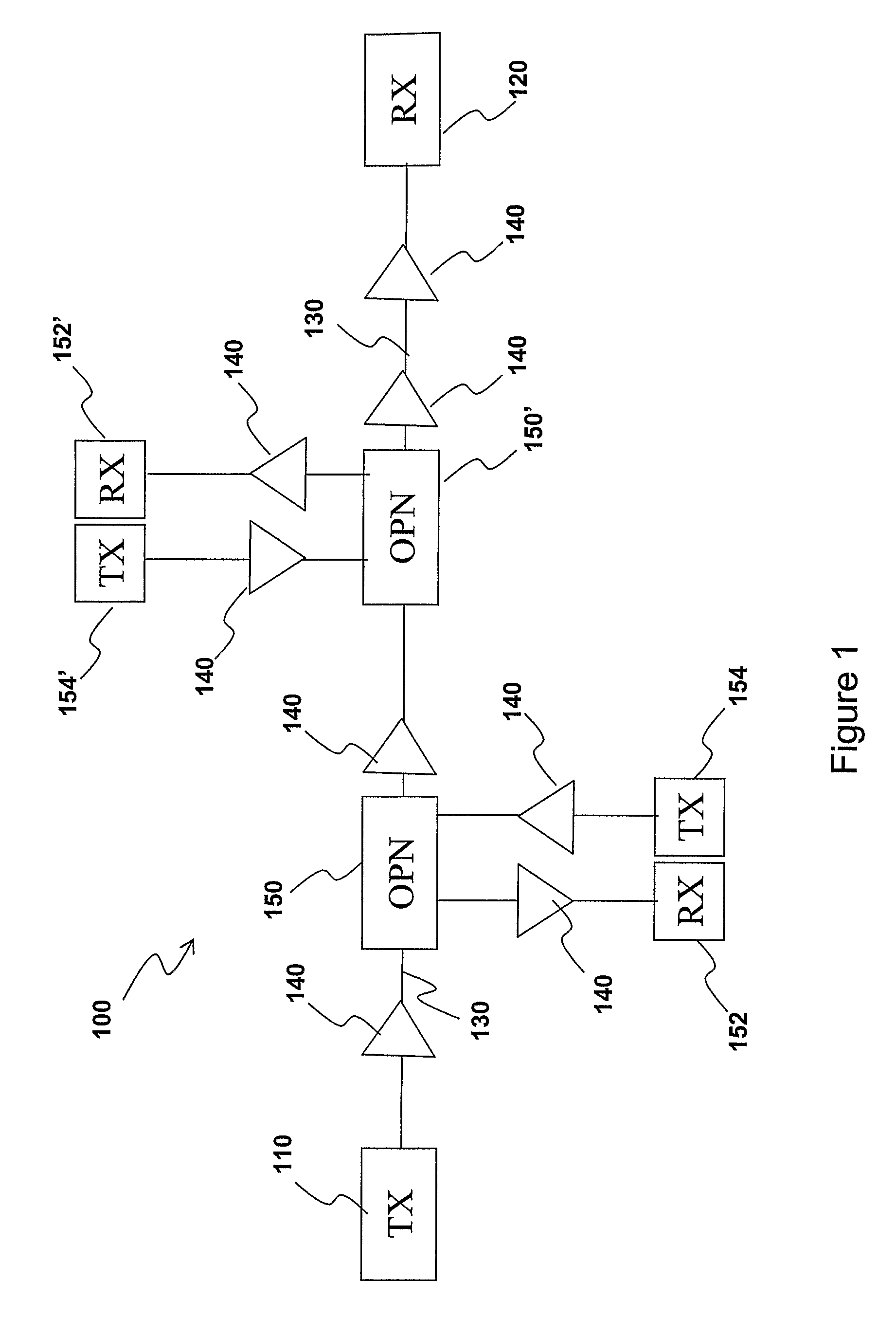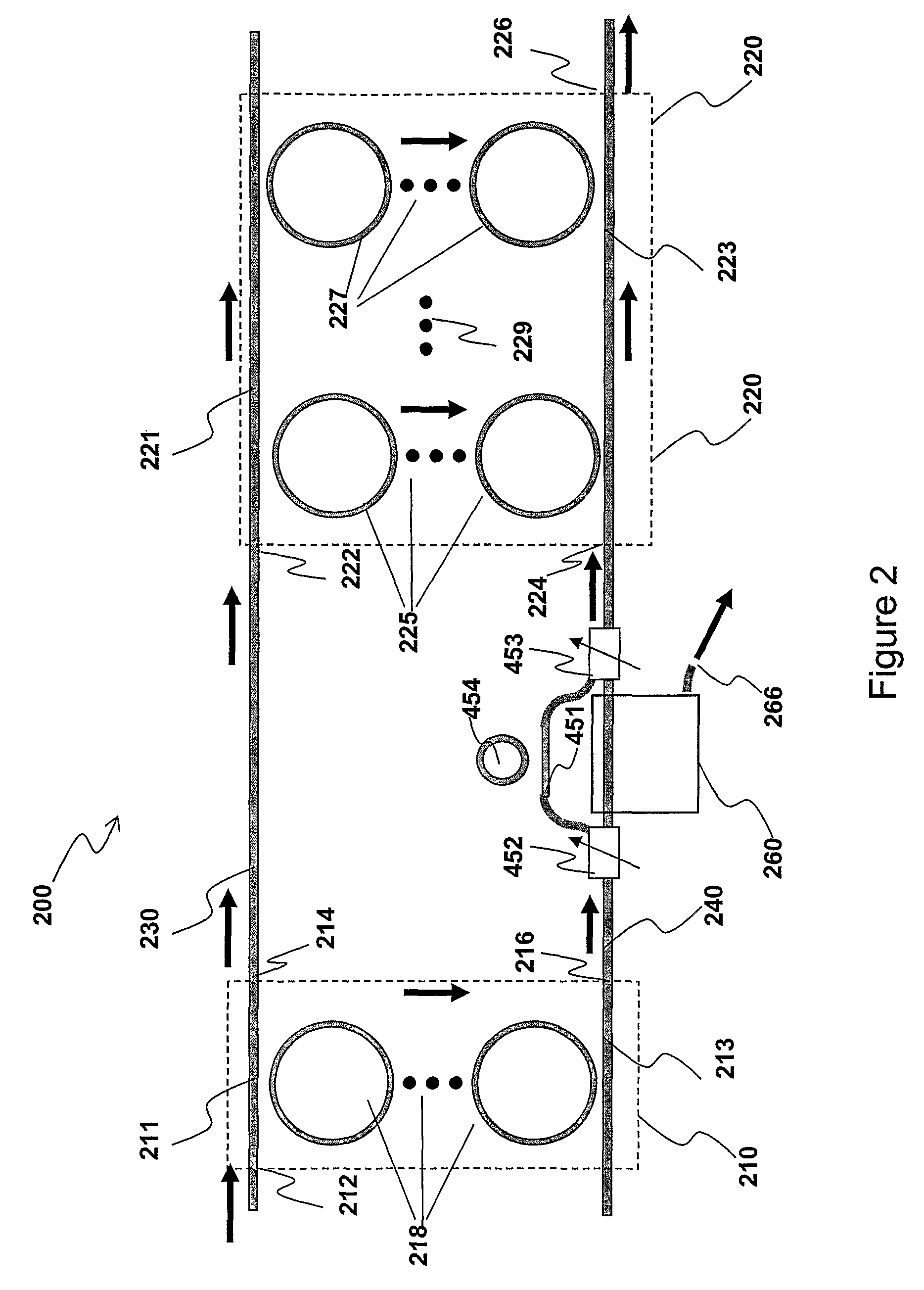Method and device for tunable optical filtering
a filter device and optical filter technology, applied in optical multiplex, wavelength-division multiplex system, instruments, etc., can solve the problems of increasing the number of independent channels, complex structure, and inability to optimally design the filter device described in the cited patent, so as to reduce the alteration, reduce the cost, and fast tunable and/or broadband
- Summary
- Abstract
- Description
- Claims
- Application Information
AI Technical Summary
Benefits of technology
Problems solved by technology
Method used
Image
Examples
Embodiment Construction
[0068]FIG. 1 shows an optical communication system architecture according to a possible embodiment of the present invention.
[0069]The optical communication system 100 comprises at least a transmitter 110, a receiver 120 and an optical line 130 which optically connects the transmitter and the receiver. The transmitter 110 is an opto-electronic device apt to emit an optical signal carrying information. It typically comprises at least an optical source (e.g., a laser) apt to emit an optical radiation and at least a modulator apt to encode information onto the optical radiation. Preferably, the transmitter 110 is a WDM transmitter (e.g., a DWDM transmitter) and the optical signal may comprise a plurality of optical channels (each carrying modulation-encoded information) having respective optical frequencies equally spaced by a given frequency spacing and occupying an optical bandwidth. Preferably, said optical bandwidth is at least 2 THz (in the near-infrared wavelength range, e.g. from...
PUM
 Login to View More
Login to View More Abstract
Description
Claims
Application Information
 Login to View More
Login to View More - R&D
- Intellectual Property
- Life Sciences
- Materials
- Tech Scout
- Unparalleled Data Quality
- Higher Quality Content
- 60% Fewer Hallucinations
Browse by: Latest US Patents, China's latest patents, Technical Efficacy Thesaurus, Application Domain, Technology Topic, Popular Technical Reports.
© 2025 PatSnap. All rights reserved.Legal|Privacy policy|Modern Slavery Act Transparency Statement|Sitemap|About US| Contact US: help@patsnap.com



